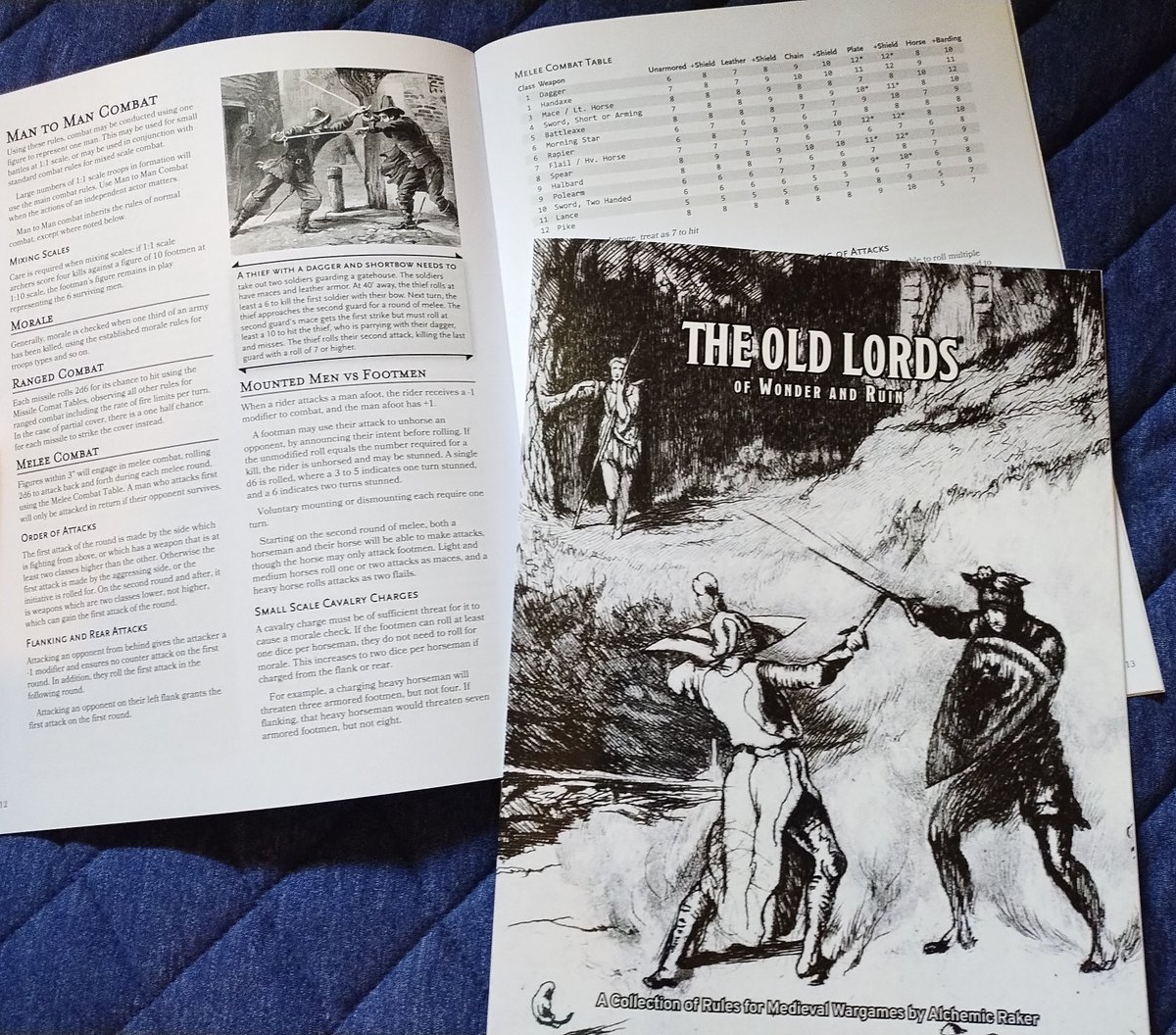The Old Lords is a clone of Chainmail (as far as OD&D is concerned) with superior layout and 2-page spreads, including clarifications for use with OD&D!
Physical copies are now once again available at DTRPG!
And as always, the PDF is FREE! (see the Description on the store page)
Physical copies are now once again available at DTRPG!
And as always, the PDF is FREE! (see the Description on the store page)

The PDF and Softcover copies are available on DTRPG!
drivethrurpg.com/en/product/483…
drivethrurpg.com/en/product/483…
Here's the two-page spread for the "Mass" Melee rules, with complete accuracy to the originals. D&D players will appreciate the explanations for "Heroic Individuals" (for use alongside familiar d20 RPG combat), and rules for using "Man to Man" 2d6 combat in place of d20 combat. 

Examples are sprinkled throughout the book, applying the rules in the kinds of scenarios which come up in D&D campaigns.
Chainmail / The Old Lords is great for playing all the sorts of combat scenarios which come up in RPG campaigns: from dungeon skirmishes to large battlefields.
Chainmail / The Old Lords is great for playing all the sorts of combat scenarios which come up in RPG campaigns: from dungeon skirmishes to large battlefields.

The complete "Fantasy Supplement" is included, updated only where it directly conflicts with OD&D. This means Wizards received a rewrite to bring them in line with OD&D's spellcasting, and Dragons' breath was rewritten for compatibility with 0e's heroic 1-minute combat rounds. 

I'd like to also showcase the back cover of The Old Lords: This a beautiful piece of art, and features Psalm 72 which really evokes the faction and alignment of "Law" in both Chainmail and in OD&D. 

• • •
Missing some Tweet in this thread? You can try to
force a refresh







